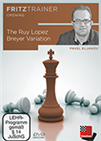The Pearl of the Black Sea
 Looking back at the relevant events from March 1925, we find: the state of Tennessee (USA) bans the teaching of the theory of evolution; Republican Calvin Coolidge is sworn in as President of the United States for a second term; Outer Mongolia is occupied by the Soviet Union’s Red Army; and Sergei M. Eisenstein releases the film Battleship Potemkin — in it, Eisenstein recreates one of the atrocities committed by the Tsarist army against the population of the Ukrainian city of Odessa.
Looking back at the relevant events from March 1925, we find: the state of Tennessee (USA) bans the teaching of the theory of evolution; Republican Calvin Coolidge is sworn in as President of the United States for a second term; Outer Mongolia is occupied by the Soviet Union’s Red Army; and Sergei M. Eisenstein releases the film Battleship Potemkin — in it, Eisenstein recreates one of the atrocities committed by the Tsarist army against the population of the Ukrainian city of Odessa.
This port city, also known as the Pearl of the Black Sea, is still the third-largest city in Ukraine. Odessa has the largest commercial seaport in Ukraine and, interestingly, some 2,500 kilometres of catacombs — a network of basements, bunkers, drainage tunnels and storm drains as well as natural caves.
Pictured: The 142-metre-long Potemkin Stairs in Odessa (1834-41) were made famous by Sergei Eisenstein in his film Battleship Potemkin [click to enlarge]
Efim Petrovich Geller, a champion in the making
In Odessa and in the midst of a Jewish family, Efim Petrovich Geller was born on March 8. He would become one of the most important figures in Soviet chess. An extraordinary player, he also had a doctorate in Physical Education, and worked as a second to Tigran Petrosian, Boris Spassky and Anatoly Karpov. Experts estimate Geller was among the top ten players in the world for about twenty years.
 Pavel Eljanov explains in depth what Gyula Breyer already saw in 1911 and what became an opening choice of the likes of Kasparov, Kramnik, Anand or Carlsen. The Breyer Variation, which is characterised by the knight retreat to b8.
Pavel Eljanov explains in depth what Gyula Breyer already saw in 1911 and what became an opening choice of the likes of Kasparov, Kramnik, Anand or Carlsen. The Breyer Variation, which is characterised by the knight retreat to b8.Among his many successes, Geller won a number of Ukrainian Championship titles (1953, 1956, 1962, 1965, 1968, 1971), two Soviet Union Championships (1955, 1979) and thirteen Olympic medals (10 gold and 3 silver). He was a World Championship candidate six times (1953, 1956, 1962, 1965, 1968, 1971) and a world senior champion twice (1991, 1992).
Beyond his great sporting achievements, obtained thanks to his extraordinary tactical and attacking skill, Geller made fundamental contributions to the development of chess theory. For example, in the King’s Indian Defence and in the Sicilian Defence with 6.Be2 against the Najdorf; he also gave name to the Geller Gambit against the Slav Defence.
Geller faced six world champions, playing 181 classical games against them. Remarkably, the obtained a combined 51.7% score in these encounters.
- Mikhail Botvinnik (+4 -1 =7)
- Mikhail Tal (+6 -6 =23)
- Vasily Smyslov (+11 -8 =37)
- Tigran Petrosian (+5 -3 =32)
- Boris Spassky (+6 -10 =22)
- Bobby Fischer (+5 -3 =2)
Find below a few of his greatest performances against world champions.
Select an entry from the list to switch between games
According to Chessmetrics, Efim Geller was ranked second in the world in three different months between the May 1963 list and the July 1963 list. His highest rating was 2765, in the August 1963 list, when he was third in the world ranking, at the age of 38 years and 5 months.
His best Tournament Performance Rating was 2805, obtained at the 1962 Curaçao Interzonal Tournament, with a score of 20½/35 (59%) against opposition averaging 2733 rating points.
In 1998 cancer ended one of the most fruitful lives in chess history, that of Ukrainian grandmaster Efim Geller, who would have turned 97 on March 8 this year.
Links


















 Looking back at the relevant events from March 1925, we find: the state of Tennessee (USA) bans the teaching of the theory of evolution; Republican Calvin Coolidge is sworn in as President of the United States for a second term; Outer Mongolia is occupied by the Soviet Union’s Red Army; and Sergei M. Eisenstein releases the film
Looking back at the relevant events from March 1925, we find: the state of Tennessee (USA) bans the teaching of the theory of evolution; Republican Calvin Coolidge is sworn in as President of the United States for a second term; Outer Mongolia is occupied by the Soviet Union’s Red Army; and Sergei M. Eisenstein releases the film 




